Should You Choose A Kikuyu Or Buffalo Lawn?
Finding a lawn that can thrive in the harsh, yet diverse Australian climate, can be confusing. Depending on your climate and soil type, certain grasses may be better suited ...

There’s no shortage of information on Buffalo grass varieties and their suitability for the Australian climate. The fact is that Buffalo is a hardy grass variety that maintains great colour all-year round which, along with its low water requirements, makes it ideal for both commercial (think sports fields or public spaces) and domestic (home lawn) applications across the country.
Amazingly, fossil records can trace early variants of Buffalo grass as far back as seven million years though, in the Common Era, the grass we’re more familiar with originated in America.
The scientific name, Bouteloua dactyloides, won’t mean much to the average home lawn owner and in different markets the grass does go by several different names; in Australia you’re more likely to hear Buffalo hybrids referred to by their varietal name, such as Sapphire Buffalo, Palmetto Buffalo or Prestige Buffalo.
Modern soft-leaf Buffalo hybrids grow year-round, and their above-ground runner system means that they’re quick to repair. That same luscious mat of leaves is also likely to out-compete most weeds, meaning a healthier looking lawn with less maintenance.
One of the key characteristics that makes Buffalo Grass so appealing for the Australian climate is its drought tolerance, stemming from its low water requirements. Compared to other warm season grasses like Couch and Kikuyu, Buffalo Grass is less likely to lose colour or condition during periods of water stress, but that’s not to say it’s drought resistant; rather it is drought tolerant.
During the hot and dry Australian summer, water your Buffalo grass at least once a week depending on water restrictions in your local area, to keep it looking its best.
Amazingly, Buffalo Grass has a high salt tolerance which is what’s made it a staple amongst the suburbs lining Australia’s stunning coastline and a regular feature in backyards with swimming pools around the country. Its salt tolerance is being widely studied, and some scientists suggest Buffalo’s large root mass might be the source of its strength in saline soils.
Much like its drought tolerance, Buffalo isn’t entirely salt resistant so it isn’t safe to irrigate your Buffalo lawn with salt water, and any pool spills should be diluted with a quick burst of fresh water from the hose to minimise any lasting damage.
Shade tolerance is an important factor to consider when choosing your grass type and certainly Buffalo Grass offers some of the best shade tolerance of any turf on the market. Sapphire Soft Leaf Buffalo for example can survive with up to 70% shade per day, while Prestige and Palmetto both hover between 60-70%.
No turf is entirely shade tolerant and all grass types will need some direct sunlight each day to help with the photosynthesis process, however Buffalo’s broadleaf structure allows the plant to capture sunlight more efficiently, translating into better shade tolerance.
When planning your new lawn, inspect the area several times throughout the day and check for shade lines stemming from awnings or eaves, fence lines, existing or planned tree plantings and even neighbouring properties, remembering that the days are shorter and the sun’s path lower during winter months.
Certainly, one of the characteristics that makes Buffalo Grass a favourite in the domestic market is its high wear tolerance. A healthy Buffalo lawn is a thick and hardy mat of above ground stolons, and its aggressive growing style and broadleaf structure allows it to recover quickly from high foot traffic and pets.
With even a modest amount of care, Buffalo grass can be groomed into a lush, green lawn with a vibrant, healthy green colour. This green colour can be further enhanced with products from reputable suppliers that contain liquid iron.
Buffalo also boasts one of the best winter colours, as the plant suffers the least from winter dormancy (the natural slowing of growth during the colder months); some of its warm season grass stablemates suffer terribly in the cold weather. During extended frosts, some Couch varieties go so dormant that they dry up and turn the colour of hay!
All plants are likely to be more active in spring, meaning the time between planting and the grass successfully ‘matting’ ( when the roots from the turf “mat” into the soil below and you can no longer pull the turf rolls up off the soil) is greatly reduced during spring and summer.
But because Buffalo isn’t as susceptible to winter dormancy, it’s safe enough to plant all year round.
Similarly, its drought and dormancy resistance make Buffalo varieties a great candidate for laying all around the country.
 Palmetto Buffalo is the world’s best-selling Buffalo grass, and with good reason. It’s exceptionally hard wearing making it great for active backyards or high traffic areas but also delivers perhaps the best “bang-for-your-buck” aesthetic of any Buffalo grass on the market – a distinctive green colour and thick leaf canopy, that requires 14% less mowing than other popular Buffalo varieties!
Palmetto Buffalo is the world’s best-selling Buffalo grass, and with good reason. It’s exceptionally hard wearing making it great for active backyards or high traffic areas but also delivers perhaps the best “bang-for-your-buck” aesthetic of any Buffalo grass on the market – a distinctive green colour and thick leaf canopy, that requires 14% less mowing than other popular Buffalo varieties!
In the Australian climate, Palmetto Buffalo is praised for its drought tolerance and low water requirements, stemming from a robust root system. This same root system makes it more resilient to invasion from pests and weeds, but not totally impervious. Such threats to any lawn should be dealt with swiftly to maintain a healthy plant.
Its popularity makes Palmetto Buffalo one of the most cost-effective premium Buffalo varieties on the market.
Where it grows: Palmetto Soft Leaf Buffalo is well-suited for most parts of Australia including much of Queensland, New South Wales, ACT, Victoria, South Australia and Western Australia. Your local Grower suppliers can easily be found with our online supplier locator tool.
Expect to pay: Between $10 and $15 per square metre. To get more Palmetto Buffalo pricing info, visit our Palmetto Buffalo info page and get 3 quotes from your local Palmetto growers today.
 Sapphire Buffalo is a grass with a rich history in Australia, tracing parts of its DNA back to one of Australia’s most famous Buffalo varieties, Sir Walter Buffalo. Think of it like improving on a classic, taking a grass that was specifically bred for Australian conditions and juicing it up with some of the latest technology!
Sapphire Buffalo is a grass with a rich history in Australia, tracing parts of its DNA back to one of Australia’s most famous Buffalo varieties, Sir Walter Buffalo. Think of it like improving on a classic, taking a grass that was specifically bred for Australian conditions and juicing it up with some of the latest technology!
This soft leaf Buffalo is renowned for its lush, green colour and delicately balances being soft underfoot yet also hard wearing, making it a favourite in kid and pet backyards.
Sapphire is perhaps best known for its market-leading shade tolerance. It’ll grow in areas that receive as little as 30% full sun per day. Independent testing here in Australia has proven it to outperform any other Buffalo variety in shade growth tests.
Where it grows: Prestige Soft Leaf Buffalo is well-suited for most parts of Australia including much of Queensland, New South Wales, ACT, Victoria, South Australia and Western Australia. Your local Grower suppliers can easily be found with our online supplier locator tool.
Expect to pay: Between $10 and $15 per square metre. To get more Sapphire Buffalo pricing info, visit our Sapphire Buffalo info page and get 3 quotes from your local Sapphire growers today.
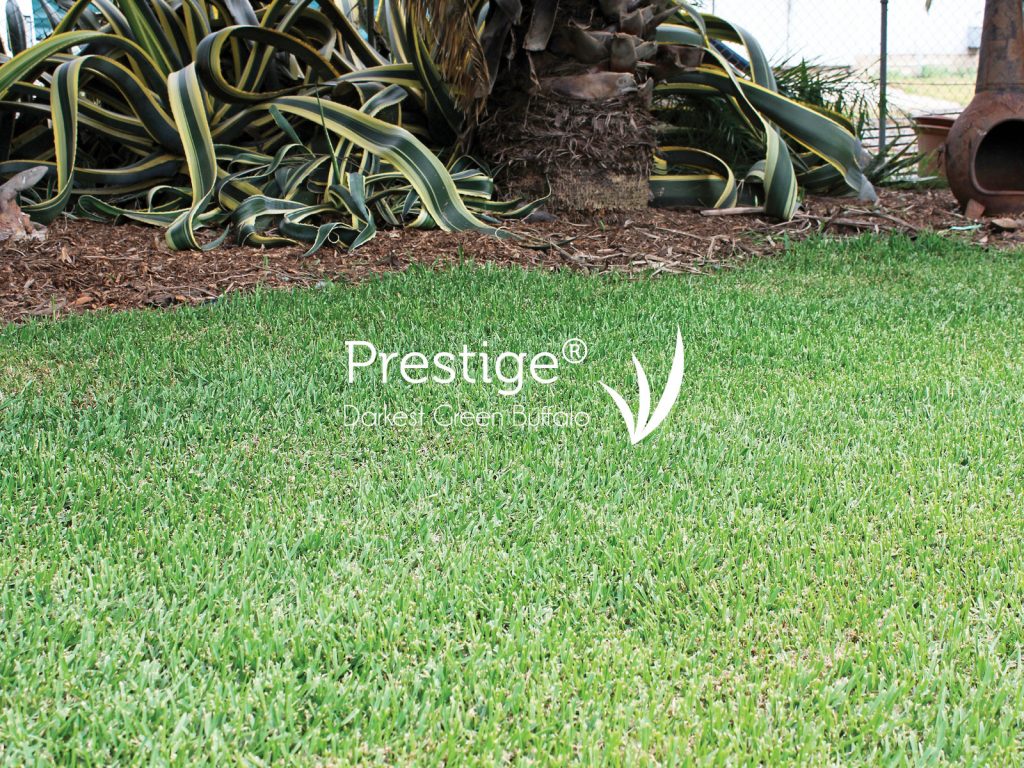 Crafted using the world’s most popular Buffalo variety- Palmetto- as its building block gives Prestige Buffalo the right ingredients to dominate in the Australian market and that’s precisely what it’s done!
Crafted using the world’s most popular Buffalo variety- Palmetto- as its building block gives Prestige Buffalo the right ingredients to dominate in the Australian market and that’s precisely what it’s done!
Loved for its unbeatable green colour and the outstanding condition it maintains year-round, Prestige Buffalo is also perfectly poised to handle periods of water stress (including drought) and is more resistant to low temperatures, cementing its position as one of Australia’s favourite Buffalo varieties.
The same root system that makes Prestige so resilient to drought and frost, coupled with its dense leaf canopy, also help it outcompete weeds.
Where it grows: Prestige Soft Leaf Buffalo is well-suited for most parts of Australia including much of Queensland, New South Wales, ACT, Victoria, South Australia and Western Australia. Your local Grower suppliers can easily be found with our online supplier locator tool.
Expect to pay: Between $13 and $16.50 per square metre. To get more Prestige Buffalo pricing info, visit our Prestige Buffalo info page and get 3 quotes from your local growers today.
Nathan Tovey is myhomeTURF’s resident expert. Decades of experience in the industry has culminated in a role which sees him work alongside turf growers all around the country to provide better quality grass to home lawn owners. Put simply, he’s the man to ask about getting the best out of your lawn.
Here are his top tips for Buffalo:
1. A healthy lawn starts with healthy soil. For established lawns, bio-stimulants like Rootmaxx or Kelp-ER are like a probiotic for your lawn and keep your soil full of the microorganisms and healthy bacteria that keep your soil full of the nutrients that your lawn needs.
If you’re laying a new lawn and notice that your soil isn’t a healthy, dark brown, if it’s full of clay or debris or if it’s rock-hard and difficult to dig through, consider bringing in 5-10cm of quality turf underlay and planting on that instead.
2. Water the right way. Too little water too often will encourage the plant’s roots to prioritise water at the soil layer, instead of plunging deeper into the earth. Longer roots accessing water deeper in the soil will lead to a healthier plant – one that’s more resilient to temperature extremes, and one that will recover more quickly from bug attacks or other stress.
Give your lawn long, deep watering, less frequently for the best results.
3. Have a maintenance plan. As well as scheduling your watering and mowing, a good lawn maintenance program should include the ongoing use of quality slow release fertilisers, a pre-emergent herbicide and pest protection like Acelepryn, at the very least! The difference between a good lawn and a great lawn is always the extra work the owner is willing to do, and modern lawn care products are cheap and easy to apply.
Be more proactive than reactive with your maintenance – you’ll save money in the long run and have a consistently better lawn as a result.
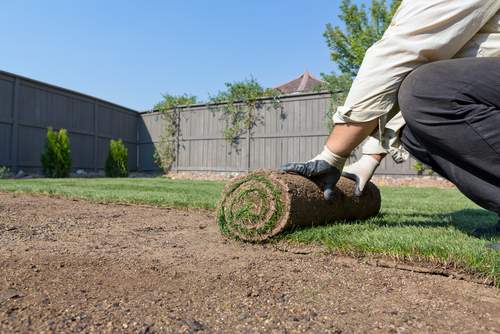 Like any good project, the secret to successfully installing a new Buffalo lawn lies in the prep work.
Like any good project, the secret to successfully installing a new Buffalo lawn lies in the prep work.
Ensure you’re planting on a healthy soil base that’s showing plenty of signs of bioactivity – a dark brown colour, good moisture levels and worm activity are all signs of an active soil that will support your new lawn and help it establish quickly. If in doubt, it’s always worthwhile bringing in some quality turf underlay from your local landscape supplies store.
Clear the area of rubble like sticks, tree roots and rocks and level the surface using a screed or soil leveller; lay down a quality Starter Fertiliser like LawnPride’s Under Turf Starter then begin to lay your brand new Buffalo lawn by rolling out the turf slowly, ensuring there are no air gaps between the turf rolls and the soil. You want to make consistent contact with the soil underneath to help the turf matt down and establish.
Offset each row of turf rolls by around 50% so that they make a pattern like house bricks to assist with root system establishment, and to give you the flattest possible lawn.
Water your new lawn thoroughly straight away and maintain a frequent watering regime for the first week, as laid out in our Watering A New Lawn guide. Pay special attention not to water too late in the evening, as leaving the grass and soil wet overnight can invite fungal issues.
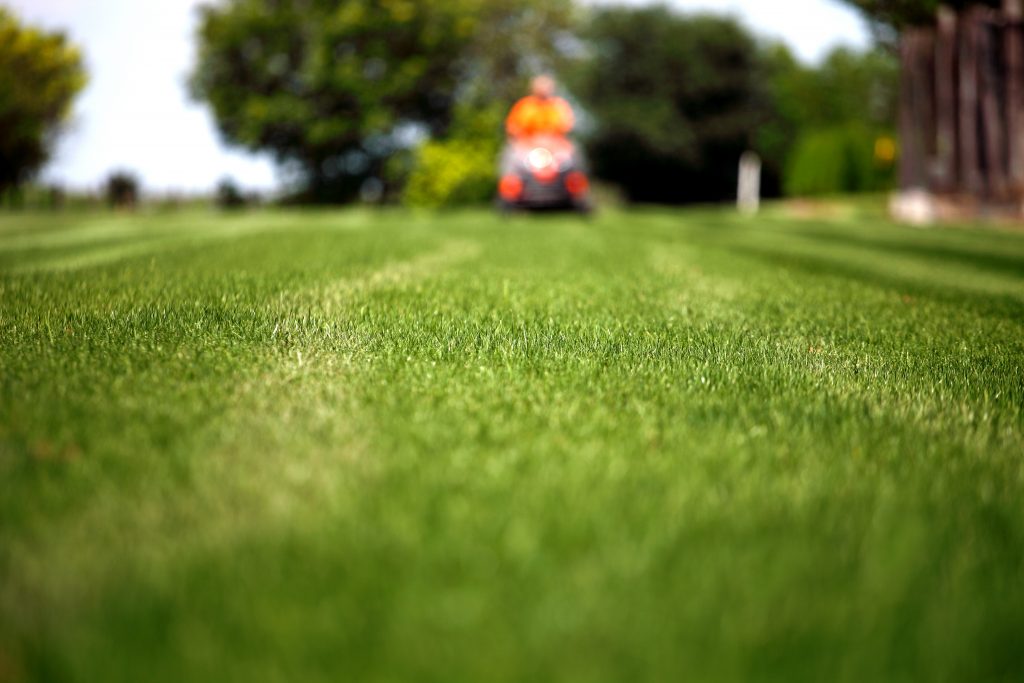 A consistent mowing schedule is one of the simplest and most effective ways to ensure a healthy Buffalo lawn and all Buffalo varieties can be mowed at a range of heights, using either a rotary lawn mower or a cylinder mower.
A consistent mowing schedule is one of the simplest and most effective ways to ensure a healthy Buffalo lawn and all Buffalo varieties can be mowed at a range of heights, using either a rotary lawn mower or a cylinder mower.
It’s exceptionally rare to see Buffalo lawns reach the low levels achieved by other turf grasses due to their network of above ground stolons, meaning that Buffalo does look healthier a little longer. 25-50mm is very maintainable for the average home lawn owner, while those mowing using a cylinder mower and with a slightly more dedicated water and lawn supplement schedule can push the height of their Buffalo down below 15mm in areas of lawn that receive full sun.
For shaded or partially shaded areas, Buffalo should be left slightly longer again so that the leaf can catch as much sun as possible to assist with photosynthesis. Similarly, allowing the lawn to grow slightly longer in winter will make it more resistant to fungal infection, frost damage and keep the best colour throughout the colder months.
Buffalo lawns can be mowed once or twice a week in spring and summer but the natural slowing of growth throughout autumn and winter can see this drop back to once every week and a half, depending on the climate in your region.
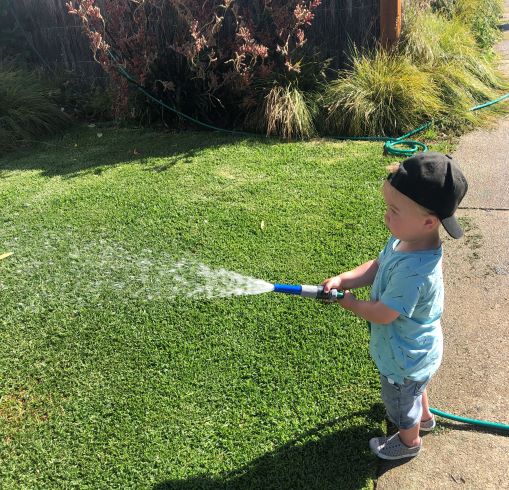 Ensuring your lawn is sufficiently watered can be a balancing act and overwatering your lawn can be as stressful as underwatering.
Ensuring your lawn is sufficiently watered can be a balancing act and overwatering your lawn can be as stressful as underwatering.
Insufficient water will present as a loss of colour and condition and the normally supple broad leaves can become dry. Heat or moisture stress can also manifest as patchy circles of green colour amidst large sections of emaciated lawn. Moisture stress is most evident throughout the warmer months when temperatures soar and can be avoided by watering for approximately 20 minutes, between two to three times a week, during spring and summer. This can be reduced to once a week during autumn and winter as your climate demands, remembering that a cool wind can dry out your lawn just as much as a scorching summer sun.
Overwatering is just as dangerous and can lead to nutrient wash (dilution of products like fertiliser, pest protection or herbicide) or fungal issues.
Applying a quality Soil Wetting Agent can stop soil becoming hydrophobic and increase your soil’s ability to absorb and store water, keeping it accessible to your lawn’s root system.
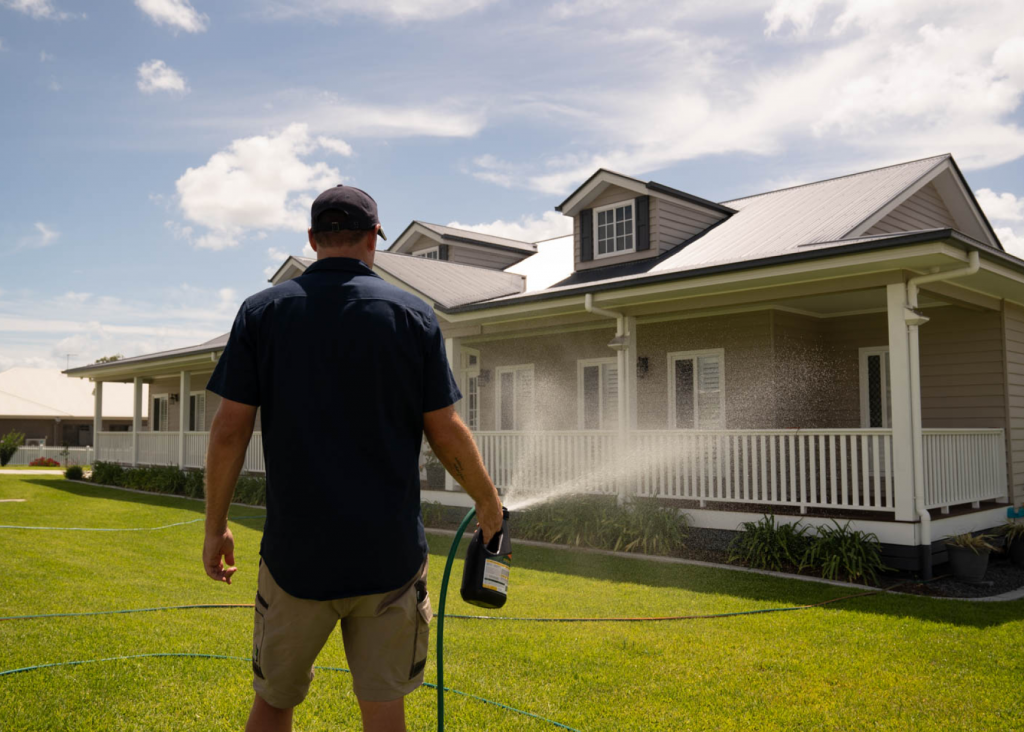 Fertilising your Buffalo lawn is a great way to encourage growth, stimulate repair of trouble spots, improve the colour and condition of your lawn and improve overall plant and soil health. It’s recommended that you use a quality, slow-release granular fertiliser heading into spring, which will slowly feed the plant for approximately eight weeks, depending on the climate in your region.
Fertilising your Buffalo lawn is a great way to encourage growth, stimulate repair of trouble spots, improve the colour and condition of your lawn and improve overall plant and soil health. It’s recommended that you use a quality, slow-release granular fertiliser heading into spring, which will slowly feed the plant for approximately eight weeks, depending on the climate in your region.
Buffalo lawns can tolerate a fair degree of Nitrogen (presenting in most fertilisers in the form of Urea) which is the compound responsible for growth and some of the green colour, but if a darker, greener lawn is what you’re chasing be sure to seek out a fertiliser with some Iron (Fe) content, too.
In between granular fertiliser applications, you can keep your lawn active throughout spring and summer by spoon-feeding it liquid fertilisers or apply soil tonics such as those containing Kelp to improve soil condition and strengthen the plant’s root system.
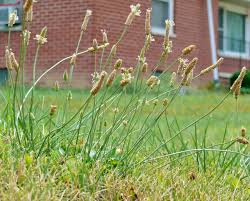 Buffalo’s dense root system does make it harder for invasive weeds to tarnish the beautiful, green leaf canopy; however the reality is that weeds are persistent and will likely germinate heading into spring.
Buffalo’s dense root system does make it harder for invasive weeds to tarnish the beautiful, green leaf canopy; however the reality is that weeds are persistent and will likely germinate heading into spring.
For small, isolated outbreaks, it’s easy enough to remove them by hand but for more prolific outbreaks, a selective herbicide like Broadforce or Bow and Arrow may need to be applied. Read the label thoroughly to ensure it’s safe for use on Buffalo lawns and apply according to the label’s recommendation, using all necessary protective equipment.
You can also stop weeds ever germinating by applying a residual pre-emergent herbicide like Onset 10GR which gives up to six months of protection against common weeds like summer grass, winter grass, paspalum and other grassy weeds.
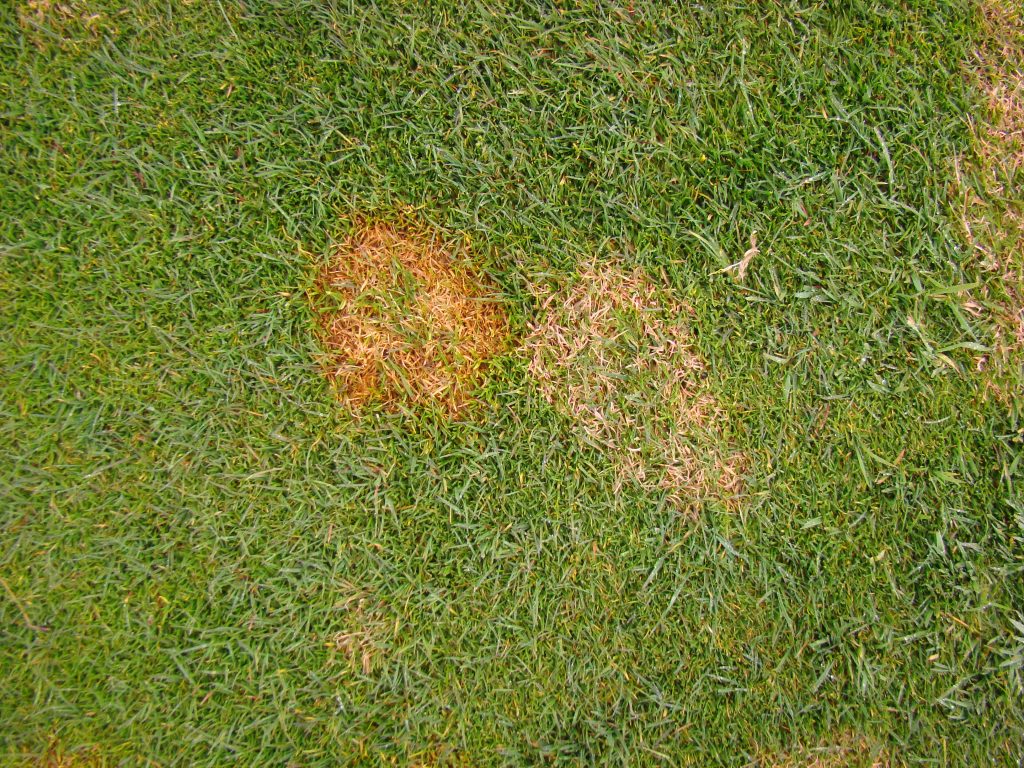 Lawn beetles and pests can be devastating and, unfortunately, the extent of an infestation often isn’t realised until damage has already occurred. Australia is most affected by Army Worm and African Black Beetle, both of which live below the surface of the soil and devastate a plant’s root system.
Lawn beetles and pests can be devastating and, unfortunately, the extent of an infestation often isn’t realised until damage has already occurred. Australia is most affected by Army Worm and African Black Beetle, both of which live below the surface of the soil and devastate a plant’s root system.
Luckily, pest damage is easy to prevent with a residual insecticide like Acelepryn. This product is often applied early in spring and can provide up to six months of protection, depending on the climate in your region. Reapply heading into autumn to ensure pests are kept at bay throughout their gestation and larvae cycles.
Fortunately, Buffalo is relatively resistant to most common diseases. In instances of over-watering, watering too late in the evening or periods of high rainfall and humidity like a summer storm season, Buffalo can suffer from brown patch which thrives in the humid conditions created in the canopy of a perpetually damp lawn. It materialises as brown, circular patches on your Buffalo grass, ranging in size from very small up to a few metres in diameter. The patches are sometimes surrounded by a grey, smoky outer ring, or sometimes just this outer ring surrounds green grass in the middle. This can be easily rectified by adjusting your water schedule, removing some thatch from the canopy to assist with aeration down to the soil layer or, in extreme cases, applying a selective fungicide.
Other common complaints include spots on the leaf, which could either be Black Spot which festers in conditions like those described for brown patch or rust, which will appear as brown ‘rusty’ looking stains on the lead arising from excessive nutrient application, specifically excessive Iron. If you suspect your lawn is suffering from a fungal infection, first identify the affliction by researching online. The solution might be as simple as adjusting your Nitrogen application, or in some cases, could require the application of a specialist fungicide
Being Australia’s most popular lawn variety, and its suitability to all climates and regions, finding a MyHome Turf Buffalo Farmer in your region is simple!
Try our Find A Turf Supplier tool and enter your postcode to be connected to growers in your area who can assist with pricing.